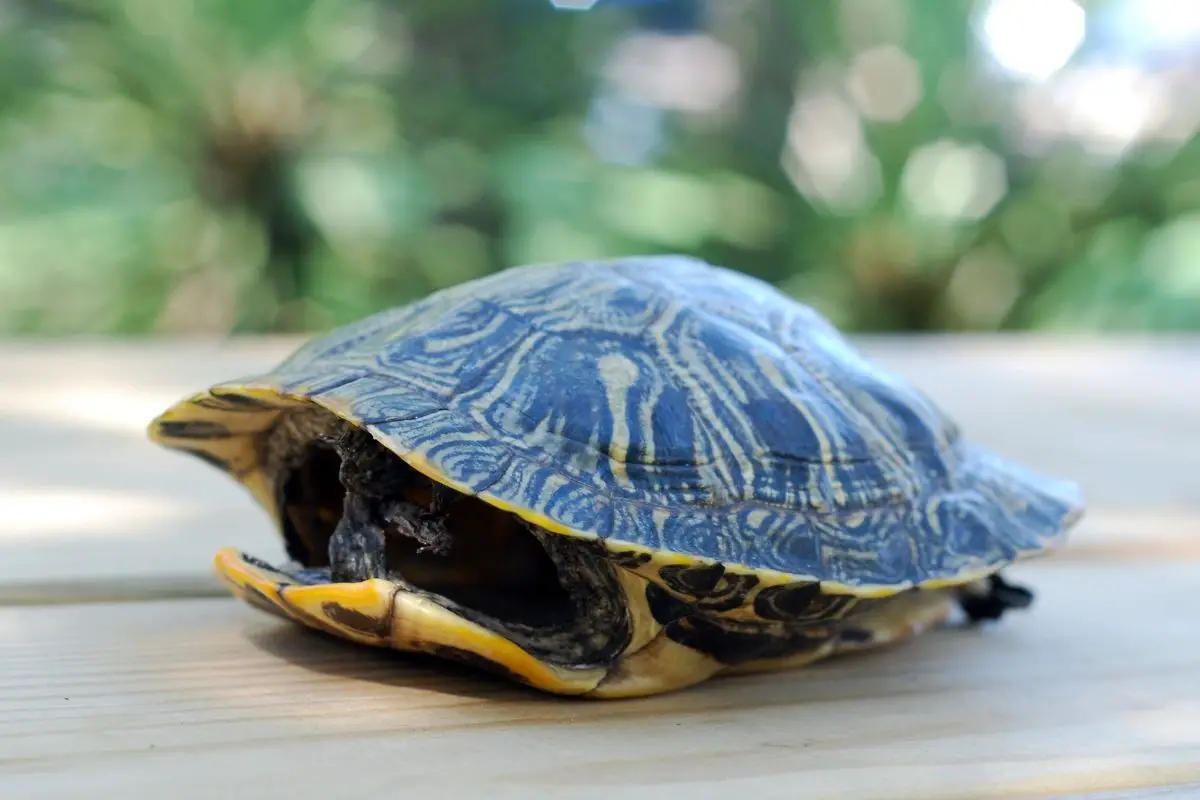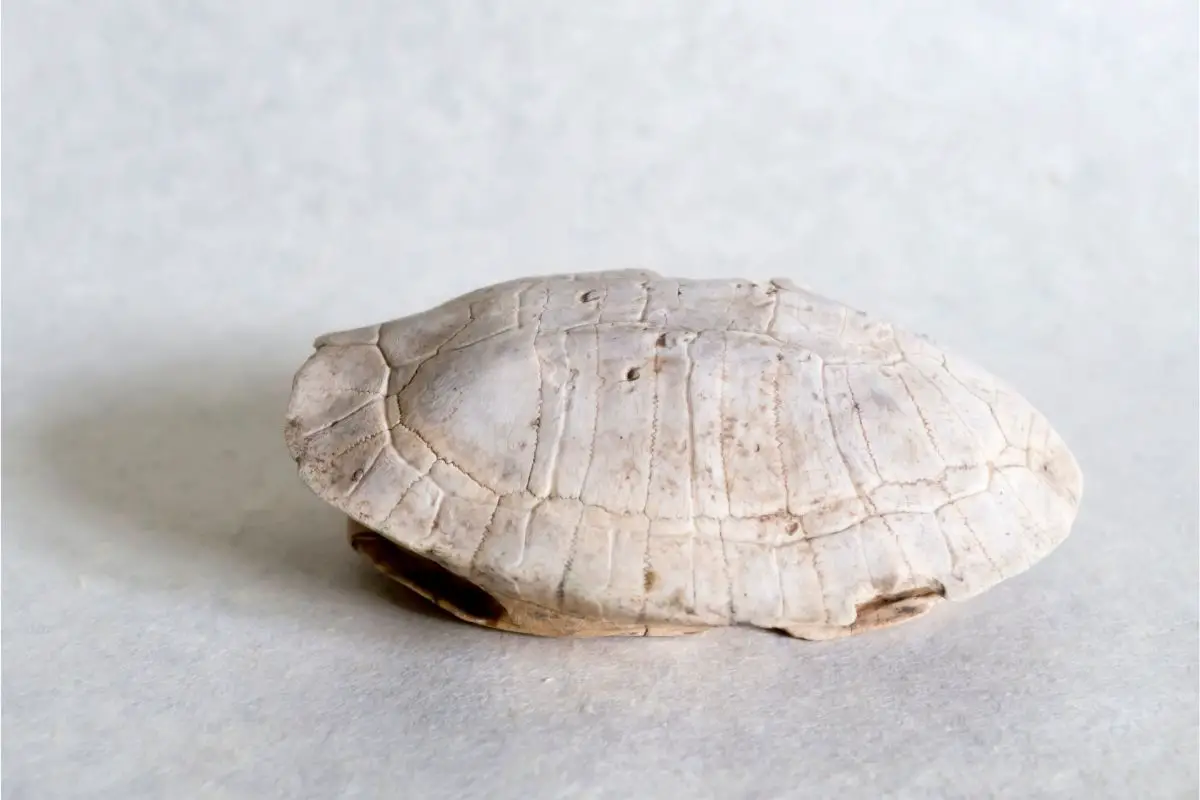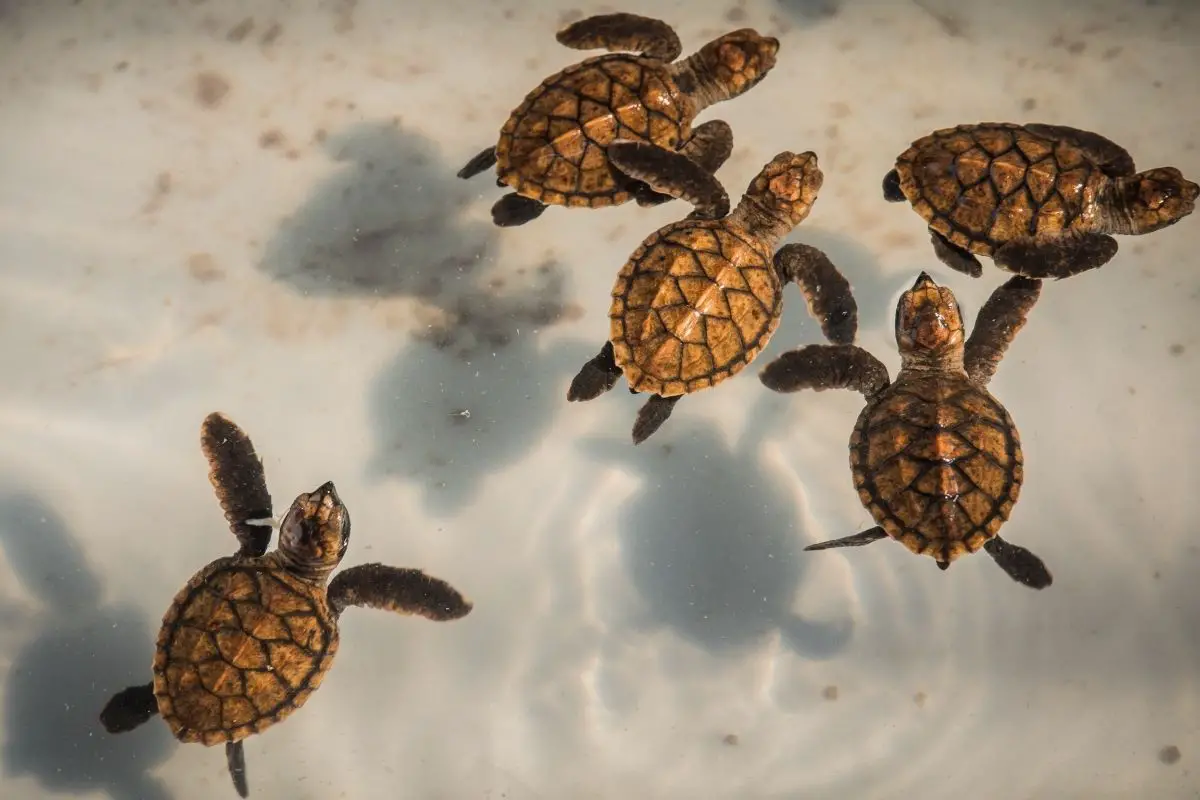The shell of turtles differentiates them from every other species on the earth.
This part of a turtle’s body is made of calcium carbonate, and we can readily identify different species of shell turtles when we encounter them because they have different traits that distinguish them from other turtles.

You may have wondered whether turtles can survive without having shells and if there are any shell-less turtles species in the world.
Here we will tell you all of the important turtle shell facts that you need to know, from if there are any shell-less turtles in the wild to the various complex parts of a turtle’s shell.
Are There Any Shell-Less Turtles?
There is no doubt that every turtle species that exists today has a certain type of shell.
Even though the turtle’s shell may occasionally be soft rather than firm, the shell is still a crucial part of its body and must be preserved at all costs.
This was not always the case, though, as there was a time in the distant past when turtles were roaming around shell-less.
In fact, a lot of the modern turtles’ predecessors did not have a protective shell, which may be traced back far enough in their evolutionary history to be discovered.
Why Turtles Cannot Live Without Their Shell
In movies or tv shows, you may have seen an animation of a turtle coming out of its shell, almost as if it was wearing the shell as clothes.
However, this is not how it works in the real world, and a turtle can’t live without its shell.
Turtles are unable to survive without their shell for a variety of reasons, the most important of which is that the shell is an intrinsic part of their body.
The turtle’s shell is composed of virtually all of the bones that can be found within the animal, and underneath is the turtle’s internal organs.
The shell is in charge of ensuring that everything remains in its right location. If a turtle does not have a shell, it will have the appearance of melting jello.
There is little chance that turtles would be able to maintain their typical shape if they lacked a shell. However, they would not survive long as they would be defenseless if this were the case.
A turtle’s shell acts as its primary line of defense against predators, and it is made of hardened calcium carbonate.
All turtles will be rendered defenseless if their capacity to protect themselves is taken away from them by a predator.
Types Of Shell
While all turtles have a shell, there are two different types of shells that you can see on these animals, a softshell and a hard shell. Here are the differences.
Soft Shell
Turtles with a soft shell don’t have a hard outer shell like their hard counterparts; instead, they have a leather-like material covering their backs, which keeps them safe from predators.
Even if soft shells are still quite tough, their durability is nothing like that of hard shells, and they certainly do not look to be as resistant to abrasion as hard shells.
Even though they have a leathery look, they are made entirely of bone on the inside.
Hard Shell
When it comes to hard-shell turtles, scutes are a distinguishing characteristic that helps to make their shells more durable than those seen in other species.
Scutes are made of keratin, which is a protein. Keratin is the same chemical that builds our fingernails.
In addition to functioning as a protective covering, scutes also help to guard the carapace. The majority of turtles will ultimately lose their scutes and replace them with new ones as they grow and age.
If a turtle in the wild got attacked by a predator, then the scutes would become a bit damaged, but in all likelihood, the turtle would survive. After an attack, the turtle might again shed the scutes and grow new ones.
The Structure Of Shells

Hard shells, like all other shells, cover almost the whole body of the turtle, except for the extremities and their heads.
When it comes to putting together the shell, there are two main pieces that sort of hold everything together. These are the carapace (the top of the shell) and the plastron (under the turtle).
The Carapace
In turtle terminology, the carapace area is the upper area of the turtle’s shell, which is the portion of the shell that covers the turtle’s back.
In most cases, the carapace part of the shell is made up of flatted and broad ribs that have become fused through time, with some of the spine and other supporting elements thrown in for good measure.
In contrast to the ribs, which have fused completely with the rest of the carapace, the backbone has fused with the rest of the carapace but can still be distinguished from the rest of the bones in a significant section of its length.
Unlike all other creatures on earth, turtles have all of their ribs fused into a single huge piece, whereas all other species have several ribs that are separated from one another.
The number of different species of turtles is believed to be around 300, each having a distinctive shell shape; some have a rounder shell, some have a more obvious dome shape, and some have virtually flat shells.
Nonetheless, they all have the same bone structure on the inside of their shell. It makes no difference whether the shell is a different shape.
The Plastron
The plastron, on the other hand, is the rear half of the turtle’s shell. It is the flat part that you can see underneath the turtle. Nine bones, as well as two epiblasts, make up the plastron.
Unlike the carapace, current research and scientists are unsure of how turtles evolved to have the plastron.
We know that the carapace was formed as a result of the fusion of the ribs and the backbone, which occurred during the formation of the carapace.
When it comes to the plastron, there is, however, no conclusive answer at this time.
The best theory we have as to why turtles have this body part comes from the 19th century. A French scientist hypothesized that the plastron was produced by the turtle’s sternum.
This is usually regarded as the most plausible explanation for the phenomenon. The validity of his theory has not been proven as of yet, though.
Both the plastron and the carapace are not the only pieces that make up a turtle’s shell. The shell has another critical component that attaches the carapace with the plastron and shields the carapace.
The Bridge
The bridge is the portion of a turtle’s carapace that links the plastron to the rest of the carapace. It may be found on the sides of the turtle’s shell, as well as on the back.
The origins of the bridge are also currently unknown at this time. Despite this, it is quite likely that the bridge is also constructed of fused ribs.
For the turtle, the bridge has two purposes: first, it serves to defend its sides; second, it serves to keep the carapace and plastron firmly attached.
However, even though the bridge does not conduct many operations, the functions that it does do are crucial to keeping everything in place on the turtle’s body.
The Evolution Of Turtles

Even though we now nearly have a full understanding of how a turtle’s shell works and what it is made from, we still do not understand how turtles came to exist in the first place.
But one thing is certain. There was a time on Earth when turtles did not have shells on their bodies, and they were somehow able to survive like this.
In recent years, there have been two prominent ideas on how turtles obtain their shells, both of which have been backed by scientific data.
According to popular belief, the original turtles did not have shells but instead had something on their backs that looked close to what is now recognized as being present in current turtles.
Eventually, as time continued, more scutes were added, which fused with the bones beneath them to produce the shell that we see today.
Alternatively, it had been found that the ribs of prehistoric turtles continued to grow and expand until they eventually fused, resulting in the shell that we are familiar with.
This second discovery led to the realization that the previous theory was incorrect and that the turtle’s shells were formed by ribs that expanded and fused during their evolution.
It has not yet been determined what caused this phenomenon in the first place, though.
Earlier fossils have revealed that the first turtles that looked anything like contemporary turtles had just the plastron and no carapace, suggesting that they were at least one evolutionary step removed in terms of appearance from the present-day turtle population.
Their bodies were not covered with ribs, as was the case with the majority of the other species, but rather with a carapace.
According to the fossil record, the turtle species in question was known as odontocetes and existed around 220 million years ago, at the time of the dinosaurs.
The plastron on these full-shelled turtles was strikingly similar to the plastron on our current full-shelled turtles. This is an important find.
It is impossible to tell what form the shell was in its upper half (the carapace), but the bottom component of the shell, known as the plastron, may be used to determine what shape it was in its lower half.
Researchers published a theory in 2016 to explain why turtles have developed a shell, and it is worth your time to have a look at it.
In simple terms, though, it says that turtle fossils from the early Cretaceous period reveal that turtles were not aquatic creatures but rather terrestrial species that preferred digging.
Following this notion, the greater ribs would have provided the ancient turtles with a significant deal of stability when they were digging in the ground.
It is possible that other digging critters, such as the anteater, which is also a burrowing species, have a pattern of broad ribs that is similar to the pattern found on ancient turtles.
The disadvantage of having large ribs is that they significantly restrict mobility in the lower body. This is especially true in the case of females.
As a result of this constraint, turtles are unable to travel at fast speeds in their environment.
In turn, as a result of their increasingly slower speed, the turtles became more vulnerable to predation.
At this time, the ribs began to fuse, eventually resulting in the formation of the easily recognizable shell that we are all acquainted with.
Due to this, turtles were safer, and they were also able to dig more effectively than before.
Turtles began to spend significantly more time in the water and less time excavating during their evolutionary history, signaling a shift in their behavior that was seen throughout history.
Summary
As you can see, there is no way for turtles to survive without having their shells, as it is a vital part of their bodies that hold everything together.
Their shells are an excellent defense mechanism that is almost impossible for any predator to break, and they are also somewhat self-healing in the rare case that some damage is done to them.
Frequently Asked Questions
Are Turtles Born With Their Shell?
Yes, all species of turtle are born with their shell intact. Turtles hatch from eggs, which have been buried underground, and when they dig themselves out, they bring on their backs a completely-developed shell.
The shell grows with them as they grow, with the scutes shedding when needed to help this process along.
Can A Turtle Heal Its Shell If Injured Or Damaged?
This all depends on the extent of the damage and what caused this injury in the first place.
In the wild, a turtle is likely to be attacked by predators, but its shell is so tough that it is extremely hard for an animal to bite through it.
What will likely happen here is that the scutes may get a bit damaged in the attack, and so the turtle will shed these off afterward and begin to grow new ones.
However, if in the wild, the turtle’s shell gets cracked by something, there is no way for the turtle to heal this, meaning that it might die from its injuries.
Apart from attacks, there is another way that a turtle’s shell can become damaged. In captivity, turtles sometimes experience something called shell pyramiding.
This is when the shell’s scutes grow upwards rather than staying more flat and rounded.
There are several causes of this condition, with them all being situations where the turtle has not been cared for properly. A turtle’s shell can begin to pyramid due to several factors including:
– Lack of calcium in the diet
– Overfeeding
– Too much protein and fatty foods are being consumed
– Too little exercise
– Too few UVB rays
– Once pyramiding ha
How Many Bones Are In The Carapace?
In this part of the turtle shell, there are 50 bones, but you wouldn’t think it when looking at this part of the shell. This is because it just looks like one very large piece of bone.
What has happened here is that the bones have all fused to make up the shell.
